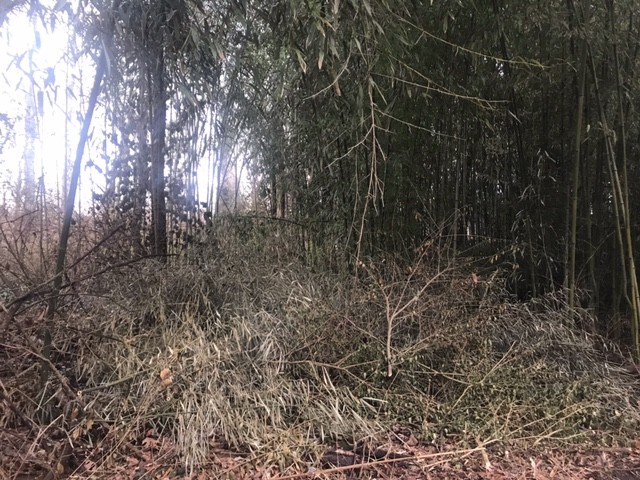Some eight or 10 four-drawer file cabinets at the McClung Historical Collection contain many precious so-called “vertical files” with newspaper clippings and other documents assembled under Librarian/Archivist Ted Baehr’s careful guidance over many years.
Several years ago, in a thick folder labeled “Knox County, TN, Communities, Fountain City,” I found an article from the Fountain City Shopper (April 1, 1986) titled “Forgotten Cemetery: Tracing a Fountain City Legacy” by columnist Ken Barringer. The column recounts the history of Elm Grove Cemetery (Circa 1890-1949).
In the mid-19th Century, the Methodist Episcopal church split into two divisions following the Civil War. The Fountain Head (later Fountain City) Methodist Episcopal Church agreed that those members favoring the North could meet in their facility at a designated time. But, when they showed up one Sunday, they had been locked out.

This Google map shows the Elm Grove Cemetery. The pinpoint is a bit off, and the cemetery is actually at the yellow circle, per Beth Kinnane.
In 1888, Sarah E. Tillery donated land on Jacksboro Pike for a new church. Two years later she sold another adjoining tract to the church for $390. The total parcel, including the cemetery, now totaled about two and one-half acres. The church was located where the Jacksboro Arms Apartments now reside and the cemetery is now surrounded by homes on Jacksboro Pike to the east, Rennoc to the south, Oak Grove to the west and Lynnview to the north.
Barringer located a long-time member of the church, Darthula Stern, whose mother, Addie Galyon, had told her the church history. The church records that once existed showed that the congregation had thrived for 28 years and had 21 ministers during that time. Then several church members noticed that the Whittle Springs Hotel and Resort had resulted in a boom in that area and thought they should move to that location on Old Broadway nearer the railroad tracks.
They salvaged the pulpit and pews and whatever else they could and met in a temporary building on the property now occupied by Buddy’s Bar-B-Q while the church was under construction. The Depression and World War II delayed its completion until 1956. The church was now called the Whittle Springs Methodist Church.
In a few years, increased traffic on the railroad increased danger at the railroad crossing and the noise made it difficult to hold services. The church moved to Plummer Road (off Dutch Valley Road) and became St. Andrew United Methodist Church.
Stern remembered that many of the church records were lost in a fire at the church secretary’s home in 1915 and that others were destroyed in a fire at the Whittle Springs church at a later date. Addie Galyon’s brother, S.R. Galyon, observed that the cemetery had not been kept up much since 1916. Dr. Joe Frye, head of the board of trustees of St. Andrew, said that the church had absolved itself of maintenance of the cemetery and felt that the property belonged to the descendants of those buried there and the citizens of Fountain City.
Today, there is a renewed interest in rescuing the cemetery from its years of neglect and there may be an opportunity for the public to participate in the maintenance of this historic site.
Author’s Note: The author wants to thank Ted Baehr Jr., Ken Barringer and Arthur W. Glenn III for their assistance with the text and photographs for this article.
Jim Tumblin, retired optometrist and active historian, writes a monthly series called “Fountain City: Places That Made a Difference” for KnoxTNToday.com.

